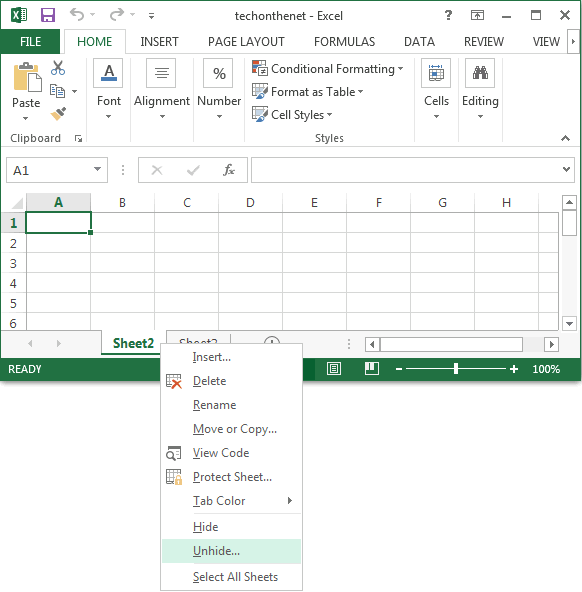3 Easy Ways to Unhide Hidden Sheets in Excel

Have you ever found yourself staring at an Excel workbook, wondering where certain sheets have disappeared to? Hidden sheets are a common practice for organizing complex data models, protecting sensitive information, or just keeping your workspace neat. However, when it's time to access or work with these sheets, knowing how to unhide them is crucial. Here are three straightforward methods to unhide hidden sheets in Excel, ensuring you can continue working without any obstacles.
Method 1: Using the ‘Unhide’ Option


The simplest method involves the Excel Ribbon:
- Open your Excel workbook.
- Select any visible sheet.
- Go to the Home tab.
- In the Cells group, click on the Format option.
- Hover over Hide & Unhide and select Unhide Sheet.
- If there are multiple hidden sheets, a list will appear; choose the sheet you want to unhide and click OK.
⚠️ Note: If all sheets in the workbook are hidden, you will need to unhide them through the VBA editor or open the file with a different tool that can access VBA.
Method 2: Unhide Sheets through VBA


When the usual options are not visible or available, VBA can be your go-to:
- Press
ALT + F11to open the VBA editor. - Locate your workbook in the project explorer.
- Open ThisWorkbook and insert the following code:
Sub UnhideAllSheets()
Dim WS As Worksheet
For Each WS In ThisWorkbook.Worksheets
WS.Visible = xlSheetVisible
Next WS
End Sub
- Run the macro by pressing
F5or through Run > Run Sub/UserForm.
This VBA code will unhide all hidden sheets in the workbook, regardless of how they were hidden. For individual sheets:
Sub UnhideSheet()
Dim WSName As String
WSName = InputBox("Enter the sheet name to unhide:", "Unhide Sheet")
If WSName <> "" Then
On Error Resume Next
ThisWorkbook.Worksheets(WSName).Visible = True
If Err.Number <> 0 Then
MsgBox "Sheet '" & WSName & "' not found.", vbExclamation
End If
End If
End Sub
These macros are handy for quickly unhide multiple sheets or one at a time with user input.
🚩 Note: To run VBA macros, you need to enable macros in your Excel settings. Always ensure you're working with trusted files to avoid security risks.
Method 3: Using Keyboard Shortcut


This method is for those who prefer quick keyboard shortcuts:
- Press
Alt + Hto bring up the Home tab options. - Then press
OUfor the Unhide command. - If there’s only one hidden sheet, it will appear. If multiple, you’ll be prompted to choose which sheet to unhide.
Remember, this shortcut works in the same manner as the 'Unhide' option from the Ribbon. It's just quicker and more convenient for some users.
To recap, unhide sheets in Excel can be done using:
- The 'Unhide' option from the Excel Ribbon, which is the most straightforward method for most users.
- VBA macros, which provide a more flexible approach, especially useful when you need to unhide all or specific sheets programmatically.
- Keyboard shortcuts, for those who prefer efficiency and speed in their workflow.
Having these methods at your disposal ensures you can manage your Excel workbooks more effectively, keeping your data accessible when you need it. Whether you're dealing with financial models, project plans, or any large datasets, knowing how to navigate hidden sheets is key to mastering Excel. As you continue to work with Excel, these skills will become second nature, enhancing your productivity and data management capabilities.
Why would someone hide sheets in Excel?

+
Hidden sheets in Excel are often used to simplify the user interface, protect sensitive information, or to reduce clutter when working with complex workbooks. They can be unhidden when needed.
Can I unhide multiple sheets at once with VBA?

+
Yes, using VBA, you can unhide all hidden sheets at once by looping through each worksheet and setting its ‘Visible’ property to True.
What should I do if I can’t see any sheets to unhide?

+
If all sheets are hidden, use the VBA editor. You can use the provided macro in Method 2 to unhide all sheets. Alternatively, if your workbook has macros disabled, you might need to open the file in another tool that can access the VBA code.



